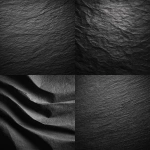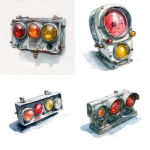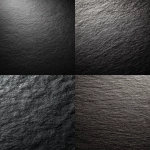Explore the Best AI Image Gallery

Beyond the Brushstroke: How Wearable Tech is Redefining Artistic Creation
The realm of creativity has long been characterized by the tangible—the physicality of paint on canvas, clay in hand, or wood under chisel. Yet, the winds of change are blowing, and at their forefront stands wearable technology. This groundbreaking innovation is not merely a tool; its a paradigm shift, blurring the lines between artist and creation, and ushering in an era of unprecedented artistic expression.
Wearable Tech: A Canvas for Innovation
Wearable tech encompasses a vast spectrum, from smart glasses and haptic suits to EEG headsets and motion capture devices. Each device offers unique functionalities that empower artists to transcend traditional mediums and explore uncharted territories:
- Smart Glasses: These immersive devices can overlay digital elements onto the real world, allowing artists to create augmented reality experiences or integrate virtual objects into their physical artworks.
- Haptic Suits: By translating sound or visual stimuli into tactile feedback, haptic suits allow artists to “feel” their creations, adding a new dimension to sensory exploration and artistic understanding.
- EEG Headsets: These devices capture brainwaves, enabling artists to translate their thoughts and emotions directly into art. Imagine sculpting with your mind or composing music through neural impulses—the possibilities are limitless.
- Motion Capture Devices: Artists can use motion capture to record their movements and translate them into digital animations, 3D models, or interactive performances, blurring the lines between physical and virtual realms.
The Creative Industry in Transformation
The impact of wearable tech on the creative industry is profound and multifaceted:
- New Artistic Expressions: Artists are pushing boundaries, creating interactive installations, immersive performances, and dynamic artworks that respond to viewers’ presence or emotions.
- Enhanced Creative Tools: Wearable tech empowers artists with intuitive and responsive tools, streamlining workflows, and facilitating the creation of complex works.
- Democratization of Art: The accessibility of wearable tech is lowering barriers to entry for aspiring artists, enabling them to experiment and create without needing expensive equipment or technical expertise.
Navigating Ethical Considerations
As with any transformative technology, the rise of wearable tech in the creative industry presents ethical considerations that must be addressed:
- Data Privacy and Security: Wearable devices collect vast amounts of personal data. It’s crucial to ensure responsible data handling practices, obtain informed consent, and protect user privacy.
- Bias and Representation: AI algorithms used in some wearable tech can perpetuate existing biases. Artists and developers must strive for inclusivity and representation in their creations to avoid reinforcing societal inequalities.
- Accessibility and Equity: The cost of wearable technology can create disparities in access. It’s important to promote equitable distribution and ensure that everyone has the opportunity to benefit from these innovations.
The Future of Wearable Tech and Creativity
The journey of wearable tech and its impact on creativity is just beginning. We can expect to see:
- More Seamless Integration: Wearable tech will become increasingly integrated into our everyday lives, blurring the lines between physical and digital realities.
- Personalized Creative Experiences: AI-powered wearable devices will offer personalized creative tools and guidance, tailoring experiences to individual preferences and skill levels.
- Collaborative Creations: Wearable tech will facilitate collaborative artmaking, enabling artists from different locations to work together in real time on shared projects.
The convergence of wearable technology and creativity holds immense potential for artistic expression, innovation, and social impact. As we embrace this transformative era, it is imperative to navigate ethical considerations thoughtfully, ensuring that these advancements benefit all members of society.

](https://images.ai-img.art/thumbnails/150/3e8c063b4357fc743a3c6e49a3145ee31b2dcecc018c38d2db8f97bf3e3fda3f.webp)


](https://images.ai-img.art/thumbnails/150/3c5dc62bba83cc9919c20ebfec8430d31e821cef586a2753dd85ef26d77d480a.webp)
](https://images.ai-img.art/thumbnails/150/1accb5453f2335686b162f0a879c7ce73a18516a33868f214a16bdaf95beeb5a.webp)
](https://images.ai-img.art/thumbnails/150/1d7b3a908141474d50d90721c394db29c0cb5404d685ae70ea60430c18e905b7.webp)



](https://images.ai-img.art/thumbnails/150/8c320ce9aefbbb5b9ec5fd4e1d0fba7388f0fff5b6c2e2f14077cad3008f291d.webp)












